- Quick Read
- Deep Read ( 6 Min. )

Why is Christian Science in our name?
Our name is about honesty. The Monitor is owned by The Christian Science Church, and we’ve always been transparent about that.
The Church publishes the Monitor because it sees good journalism as vital to progress in the world. Since 1908, we’ve aimed “to injure no man, but to bless all mankind,” as our founder, Mary Baker Eddy, put it.
Here, you’ll find award-winning journalism not driven by commercial influences – a news organization that takes seriously its mission to uplift the world by seeking solutions and finding reasons for credible hope.
Explore values journalism About usMonitor Daily Podcast
- Follow us:
- Apple Podcasts
- Spotify
- RSS Feed
- Download
TODAY’S INTRO
How we’re handling Russia’s threats to journalists
 Mark Sappenfield
Mark Sappenfield
When is a war not a war? When the Russian government says it isn’t – at least in Russia. Sharp-eyed readers might have noticed that Fred Weir’s story Tuesday on sanctions hitting home in Russia used the phrase “special military operation” to refer to the war. That is what Russia is calling it, and any Russian media that don’t comply are being shut down.
What should foreign journalists do? The threat has led some news organizations such as CNN and Bloomberg to shut down their Russian operations. That’s not really an option for Fred. He’s lived in Russia for 36 years; he has family there. He’s not leaving, and he doesn’t want to stop writing. So the answer has been to keep doing what he can uniquely do – give readers his extensive and nuanced insight into Russian society and politics at this crucial moment, and leave the war reporting to our correspondents outside Russia.
He’s heard the demands from those outside Russia on social media to “cancel” all those in Russia who do not defy the government. But such moral absolutism neglects the significant “good you can do around the edges without making bold defiant statements,” Fred says. For now, the Nobel Prize-winning editor of Novaya Gazeta newspaper is doing the same thing, calculating he can do more by staying open than by breaking the unjust rules and being closed down.
And important stories within Russia can still be told. One might be about the media itself: Slowly, employees at media outlets are beginning to take sick leave or quitting. One journalist held up an anti-war sign during a live broadcast. “I know the Russian people, and they are mostly good people,” Fred says. “People are gradually coming to terms with this and dealing with it carefully.”
Share this article
Link copied.

Help fund Monitor journalism for $11/ month
Already a subscriber? Login

Monitor journalism changes lives because we open that too-small box that most people think they live in. We believe news can and should expand a sense of identity and possibility beyond narrow conventional expectations.
Our work isn't possible without your support.
Ukraine war divides families and exiles children. Why some stay.
Protecting home. Protecting family. Keeping families together. The war is forcing many Ukrainians to choose among those principles. Our reporter spoke to families in Odessa who decided to stay.
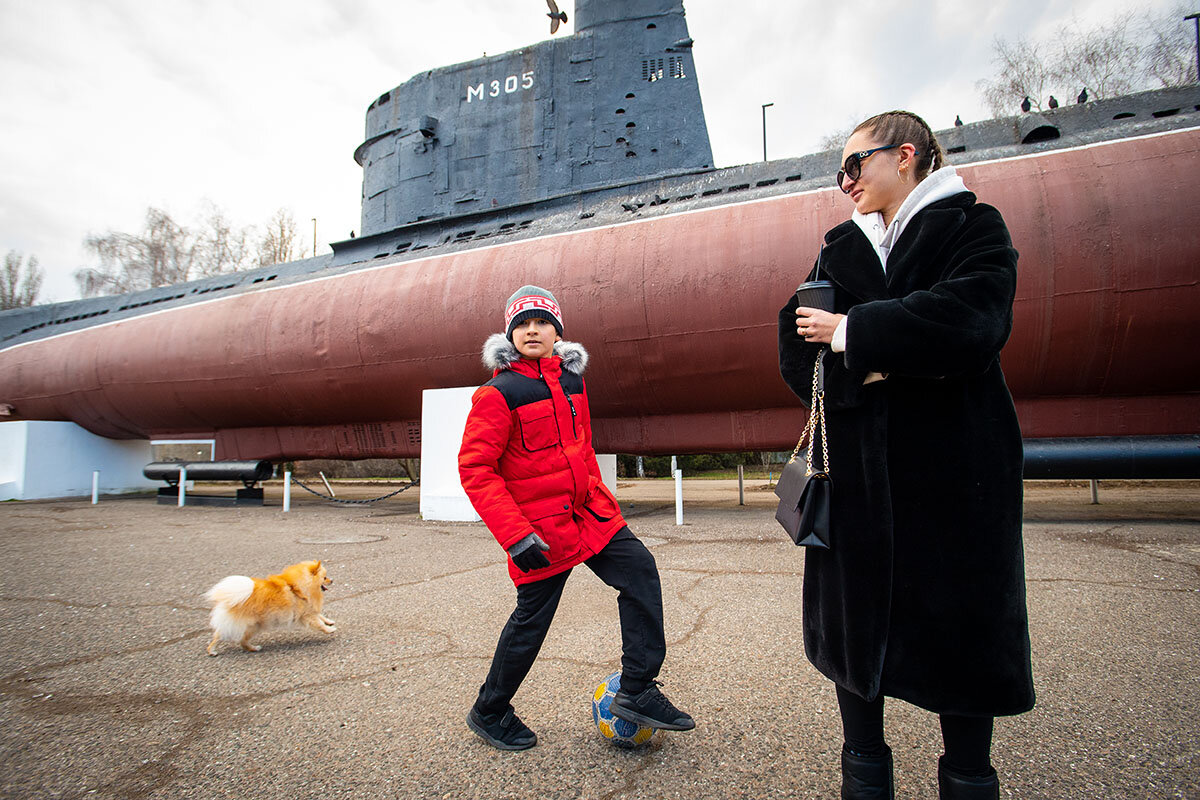
In three weeks of war, the United Nations estimates that 3 million Ukrainians have left their country – half of them children. But many more remain, a result of choices by their parents, or caught by circumstances beyond their control.
Across Ukraine, the war has forced families to make often excruciating decisions about whether to stay or to leave. Their calculations take into consideration several factors, from love of country to devotion to family.
Tetiana Gavryliuk, a doctor in an Odessa maternity ward, feels obligated to remain, but knows how tough the choice can be. She and her 12-year-old son chose to stay. She cites “our homeland” and “the city that I love,” as well as the presence of her parents, who won’t go.
“I am optimistic in my life, but this is complicated,” Dr. Gavryliuk says of her fluctuating emotions. A hopeful high point has been the defiant defense of the city of Mykolaiv, 80 miles east of Odessa. But low points include frequent scenes of Russian bombing of civilians, especially the large maternity hospital in Mariupol.
“I feel powerless when this happens. I feel we should not have mercy for them,” the doctor says of the Russian military. “I have no words for this.”
Ukraine war divides families and exiles children. Why some stay.
For decades, the aging military hardware on display at a sprawling Soviet-era park has created a favorite playground for children, who can’t help climbing on the rows of World War II artillery pieces, or marveling at the rockets and submarine.
Officially called the Memorial of the Heroic Defense of Odessa, it was created both to teach about the horrors of war – with the aim of avoiding such violence in the future – and to celebrate Odessans’ determination to defend their city.
For the families who today have chosen to stay with their children in Ukraine, despite the uncertain furies of the Russian advance, those messages are especially poignant.
On Wednesday, a Russian flotilla with amphibious landing capabilities was reported to be heading toward this strategic Black Sea port, widely seen as the final target of the Russian southern advance.
“It’s a hard decision; you have to be Ukrainian to feel this,” says Ivan, a father who gave only his first name, as his two daughters, ages 3 and 4, play on an 85 mm gun forged in 1939.
“We will be here, because it is our motherland. We will fight. We don’t have a choice,” says Ivan, his eyes tired and forehead creased with anxiety. He has joined the Territorial Defense force, his third military deployment since 2004.
Taking his wife and children out of Ukraine would require “two big bags of money,” and there is “no sense living in a tent,” says Ivan, reeling off reasons not to be a refugee. But at the top of the list is defending the nation, as a family.
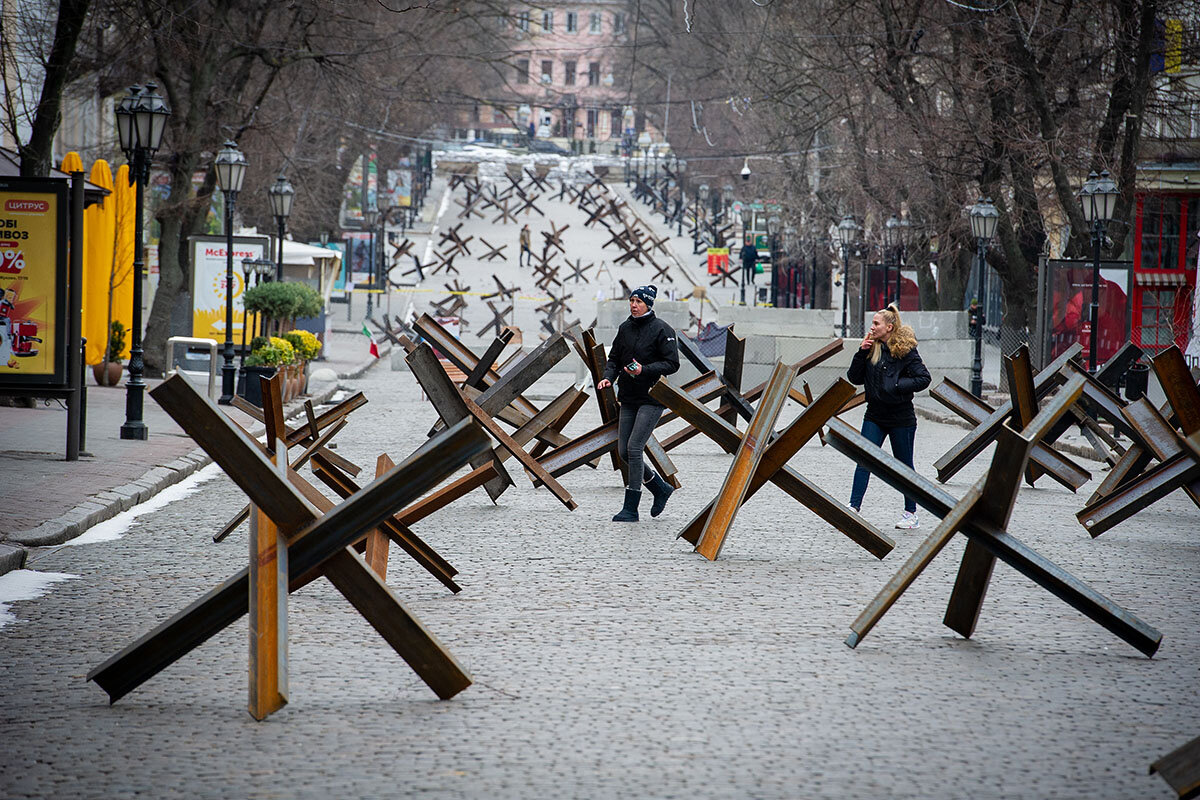
Odessa was just one of 12 places named a “Hero City” by the Soviet Union for its role in the Second World War. One carved granite slab here is dedicated to border guards, whose “bravery is a model for all generations.”
“If it’s our destiny to die here, that will be,” says Ivan, standing next to his girls’ double buggy. “Sometimes you have to make a decision.”
He waves his arm toward the relics of war, then says with a wry smile, “This should all be melted down to make bullets to use against Russia.”
Families across Ukraine have been forced to make similarly uncomfortable – often excruciating – decisions about whether to stay or to leave. Their calculations take into consideration several critical factors, from devotion to family and love of country, to the ability to control fear amid a welter of dramatic news about the conflict.
In three weeks of war, the United Nations estimates that 3 million Ukrainians have left the country – half of them children. But many more Ukrainian children remain, a result of choices by their parents, or caught by circumstances beyond their control. Men between the ages of 18 and 60 are prohibited from leaving.
Dr. Tetiana Gavryliuk knows how tough the choice can be, because, in another part of Odessa, she and her 12-year-old son, Georgii, made the decision to stay. She cites “our homeland” and “the city that I love,” as well as the presence of all her family, including parents who won’t go.
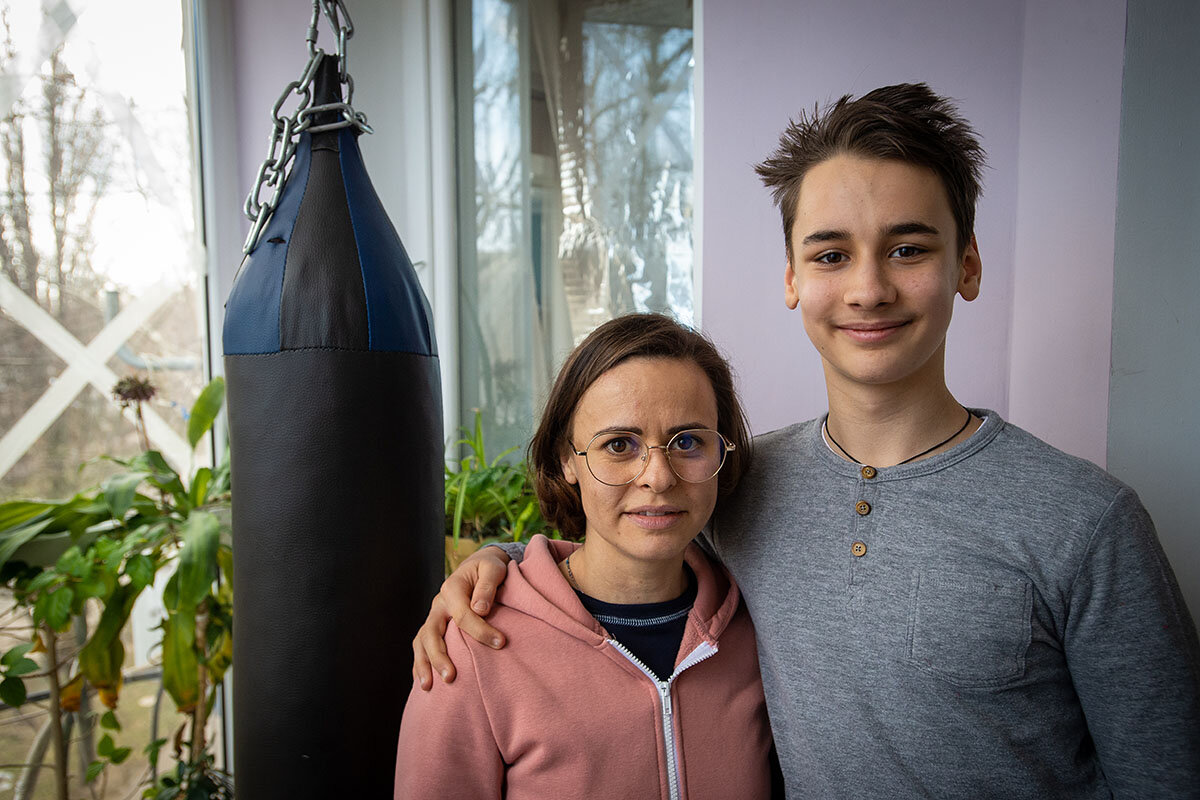
A doctor in a maternity ward – her husband, also a doctor, died from COVID-19 last year – Dr. Gavryliuk tries to rein in her panic, when hearing air raid sirens or watching news of heavy bombardment elsewhere.
Brightly colored plastic buckets filled with water sit in the hallway. Windows are crisscrossed with tape.
“I’m trying to keep sane,” says Dr. Gavryliuk, who reckons that one-third of her building’s residents have left. The pair now mostly stay with her parents in a thick-walled, 19th-century apartment building.
As a doctor, she feels obligated to remain. At her maternity hospital, all procedures can now be conducted underground. But Dr. Gavryliuk says a threshold for her and her son may be if Odessa is bombarded like some other Ukrainian cities.
“All are staying so far,” says the bespectacled doctor, whom the Monitor first encountered among scores of volunteers filling sandbags at the Odessa Yacht Club beach.
“It’s a very difficult choice,” says Georgii, in halting English. “It’s not clear what will happen.”
His mother puts her hand on his knee, to comfort him. She asks her son point-blank, “Are you scared?”
“No,” he replies. But he then clarifies a concern about “Bombs. Bombing our house. I am afraid we won’t hear the alarm and get caught up in it.”
“He is very patriotic,” beams his mother. Online classes resumed this week. Georgii has spent time making plasticine figures, building a Legos set assault rifle, and watching the History Channel’s “Forged in Fire,” in which contestants compete to manufacture bladed weapons.
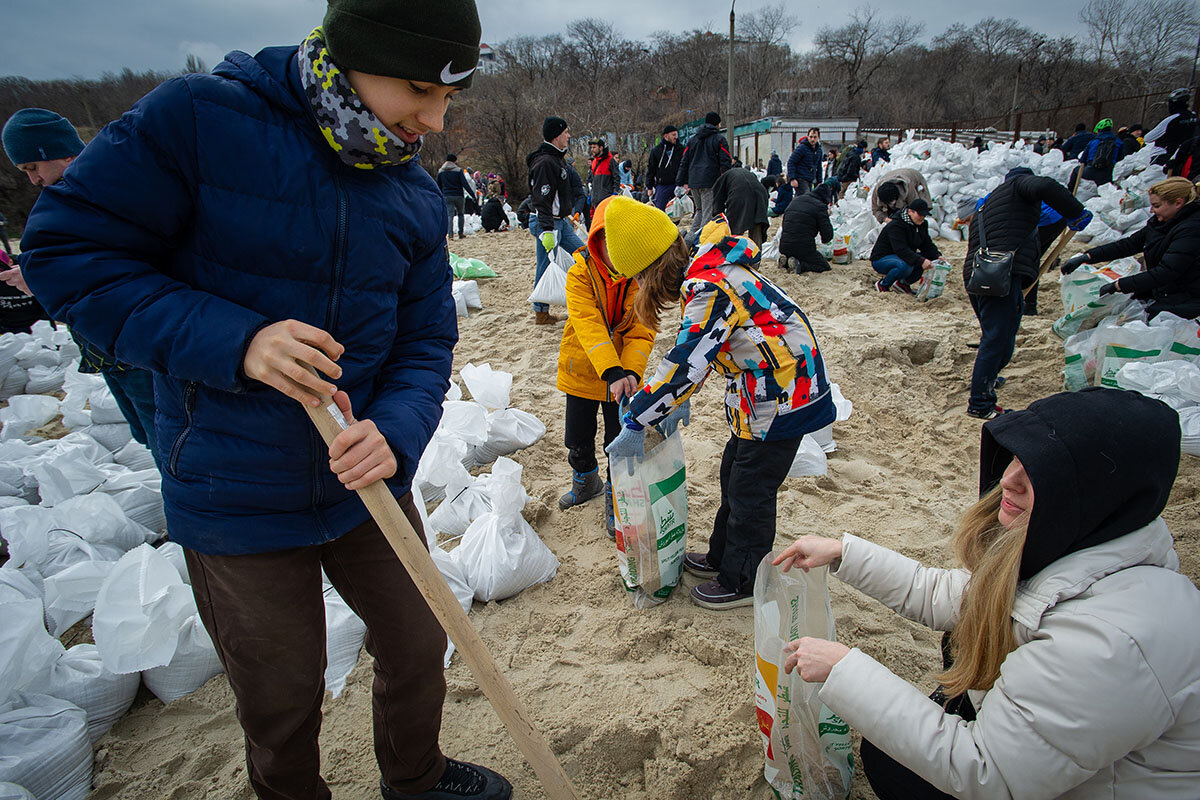
“I am optimistic in my life, but this is complicated,” Dr. Gavryliuk says of her fluctuating emotions. A hopeful high point has been the city of Mykolaiv, 80 miles east of Odessa, whose defenders have blocked Russia’s westward advance for more than two weeks.
“I was happy, I felt joy” to hear of Mykolaiv’s defiance, she says. “That’s a very tender feeling, how good that is.”
But low points include frequent scenes of Russian bombing of civilians, especially the large maternity hospital struck last week in the besieged city of Mariupol.
“I feel powerless when this happens. I feel we should not have mercy for them,” the doctor says of the Russian military. “I have no words for this.”
Also buffeted by events is Kateryna Zadorozhnaya, who at the sound of every air raid siren gathers her mother and daughter, crosses the street in the city center, and descends to the deep makeshift bunker beneath the Spaso-Preobrazhensky Cathedral, a Ukrainian Orthodox church (Moscow Patriarchate).
Below ground, safely settled within an ornate gilt religious sanctuary, three families with four children keep blankets on hand for sleeping on the carpets. During a recent air raid siren, the children played with toys and on smartphones.
“Our lives have become a life of being here, or at home – we sleep in our clothes,” says Ms. Zadorozhnaya stoically. “We have everything prepared.”
“A lot of people decided to not leave,” says the mother. The siren ends, and she starts packing up a backpack and putting snow boots on the children, for the long walk back up the stairs. “It’s my country. We live each day as it comes,” she says.
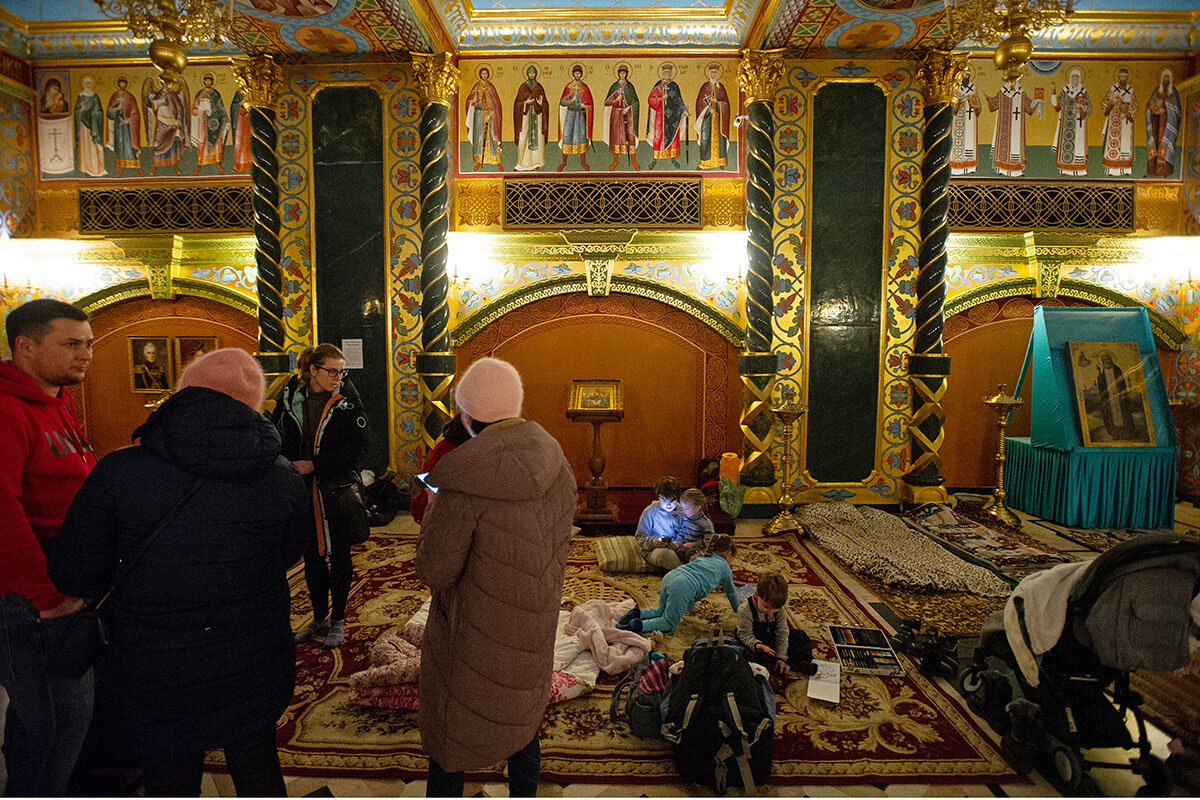
That stoicism has limits, though. Back at the memorial military park, Renata Badiul says she is staying for her family.
“I can go, but I don’t want to,” says Ms. Badiul, with the hulking Soviet Malyutka (Little One) submarine behind her. Her 11-year-old brother, Arsen, is “a person who is very nervous,” she says, but they can’t hide the news from him – or that so many of his friends have gone.
“Goodbye, my friends!” Arsen says with a faux comical wave, in a bid to lighten the mood.
“He knows everything,” says Ms. Badiul. She adds that, if she were a man with a family, she “would not ask; I would make them go abroad. You don’t know what would happen to them.”
Later, beside the hull of the same submarine, grandfather Oleg pushes a buggy with his 13-month-old granddaughter, Alisa, and brushes off uncertainties.
“If we were afraid, we would leave the city a long time ago,” he says, looking down at the child wrapped in a thick yellow jacket, as darkness and cold descend. Asked if Ukraine will achieve victory, he answers without hesitation, “Of course.”
“There is a Russian saying,” he adds. “If you are afraid of wolves, you should not be coming to the forest.”

Why sanctions bite: Russian economy isn’t huge to begin with.
Russia spends a lot of money on its military, given the size of its economy. Now sanctions are shrinking that economy rapidly. That could put Russia’s projection of power on shaky footing.
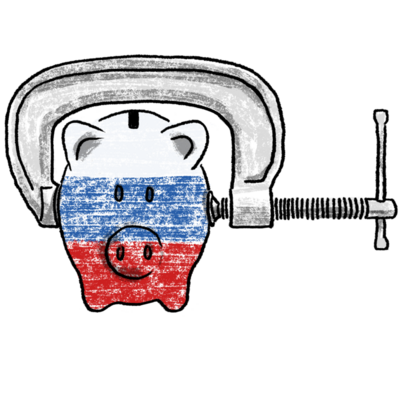
Freedom is costly. So is dictatorship.
In choosing to counter Russia’s military invasion of Ukraine with economic measures, the West is striking directly at Moscow’s Achilles’ heel. For such a large power, Russia’s economy is surprisingly small, considerably smaller than those of Italy and South Korea. Thus, maintaining the world’s No. 2 military represents a large financial burden on Russians.
Russia also looks much like a developing country in terms of trade. Its exports are mostly raw materials: energy, agricultural products, and metals. This concentration gives Moscow immense economic leverage: Relatively modest U.S. measures to restrict Russian energy exports have sent oil and gasoline prices skyrocketing. Tougher sanctions on its wheat, sunflower oil, and fertilizer exports are making food more expensive for people around the world.
But it’s a short-term advantage. The longer Vladimir Putin takes to pull those levers – cutting off Russian gas to Europe, for example – the less powerful they become. That’s because markets and nations can adjust to shortages more easily and quickly than Russia can cope with the West’s tightening economic noose.
Farmers from Illinois to Brazil can expand production. And while Europe cannot hope to wean itself off Russian gas before the next heating season, it assuredly will be on a crash course to achieve that transition far faster than anticipated just two months ago, predicts energy analyst Henning Gloystein at Eurasia Group.
Russia, by contrast, is stuck with a largely undiversified economy, a depreciating currency, and few options to strengthen either one. That’s true for its energy industry – now oriented toward Europe more than China or beyond – and also for developing alternatives to get around banking sanctions.
All this makes flouting 21st-century international norms – such as invading a neighboring country without provocation – very expensive. – Laurent Belsie, staff writer

Sources: World Bank Group, GlobalFirepower.com, Goldman Sachs, Institute of International Finance, JPMorgan Chase, GlobalData, Yahoo Finance, Investing.com

The Explainer
Clean energy depends on lithium. Can California supply it?
Lithium is a key component in clean energy efforts around the world. California could supply vast quantities of the metal with minimal environmental damage. But can it act quickly enough?

- Quick Read
- Deep Read ( 4 Min. )
The world is clamoring for lithium for a variety of energy needs, including rechargeable batteries for electric vehicles. California could go a long way in supplying that sought-after resource.
Most lithium today is mined in Australia, Chile, China, and Argentina, through methods that have serious environmental consequences.
By contrast, in Southern California’s Imperial Valley, deep below a large shallow lake called the Salton Sea, lies the world’s biggest reservoir of brine that contains lithium. Sourcing lithium there would avoid supply chain issues and mitigate negative environmental effects, says geochemist Michael McKibben, professor emeritus at the University of California, Riverside.
He sees “very little environmental problems” associated with the direct extraction of hot, geothermal brine in the Salton Sea area, where the brine is already being pulled up at 11 existing geothermal power plants. Lithium extraction could be added to those operations.
The brine “would supply all of the U.S. needs for the foreseeable use of lithium,” says Dr. McKibben. If the United States became an exporter, it “could end up dominating the global lithium market,” he adds.
But timing is important. The technology for this is just now being developed, while, Dr. McKibben says, “the auto manufacturers want that lithium right now.”
Clean energy depends on lithium. Can California supply it?

As the United States seeks to wean itself from fossil fuels, attention is turning to California and its vast reservoir of lithium – an essential component of rechargeable batteries used for electric vehicles, mobile phones, and to store energy from wind and solar power.
The world is clamoring for lithium. So much so that its price rose more than 400% in 2021. Now several companies are working to extract lithium from Southern California’s Imperial Valley. There, deep below a large shallow lake called the Salton Sea, lies the world’s biggest reservoir of brine that contains lithium. The brine is in ancient geothermal areas that predate the existence of the sea, which was created by an engineering accident in early 1900s efforts to divert Colorado River water for irrigation.
Known as “the Saudi Arabia of lithium,” California has the potential to more than meet demand in the U.S., which relies heavily on a vulnerable international supply chain that includes China.
How important is lithium to the future of clean energy?
Demand for lithium is expected to skyrocket. By 2045, California, the world’s fifth-largest economy, is mandated to have a completely renewable-energy electrical grid, which will require more large lithium batteries for electricity storage. Additionally, the state will no longer allow the sale of new gasoline-powered cars by 2035 – a huge impetus for automakers to switch to electric vehicles that need lithium batteries.
Almost all of the components of these batteries can be substituted, but lithium is irreplaceable because of its light weight, writes research scientist Michael Whittaker, in an email to the Monitor.
“As battery demand grows exponentially, so does the demand for lithium,” says Dr. Whittaker, describing the metal as “essential to the future of clean energy.” The materials expert is the director of the Lithium Resource Research and Innovation Center at the Lawrence Berkeley National Laboratory in California.
Most lithium today is mined in Australia, Chile, China, and Argentina. It’s extracted either with hard-rock blasting and acid dissolution that leave behind toxic materials or through vast, desert-land-consuming evaporation ponds.
What is the potential role of California in lithium production?
The appeal of extracting lithium from the Imperial Valley – dubbed Lithium Valley – is that it would avoid the supply chain issue and its negative environmental effects, including transport, says geochemist Michael McKibben, professor emeritus at the University of California, Riverside.
He sees “very little environmental problems” associated with the direct extraction of hot, geothermal brine in the Salton Sea area, where the brine is already being pulled up at 11 existing geothermal power plants operating in the valley. Lithium extraction could be added to those operations.
The power plants drill down and bring up the hot brine. Steam from the brine turns turbines that produce electricity. The brine is then injected back down into the earth to refill the reservoir. It’s a renewable form of energy whose main byproduct is water vapor. Lithium would be filtered from the brine before it’s returned to the reservoir.
The brine “would supply all of the U.S. needs for the foreseeable use of lithium,” says Dr. McKibben. “We could become an exporter. If we produce at the maximum, the U.S. could end up dominating the global lithium market.”
What are the impediments to developing California’s lithium?
The biggest hurdle is that the technology to filter lithium from brine is just now being developed. Three companies involved in geothermal power generation in the Imperial Valley are actively working on piloting lithium extraction and scaling it up for commercial use. The state and federal government are also supporting this lithium effort.
One company, Australia’s Controlled Thermal Resources Ltd., expects to start producing lithium in 2024, and is backed by investors including General Motors. Another, Berkshire Hathaway Energy Renewables, is being helped by a $6 million matching grant from the California Energy Commission to start a pilot extraction facility that, if successful, would put it on a path to commercial production by 2026. A third company, EnergySource Minerals, is already piloting lithium production and plans to scale it up soon.
Timing is important, says Dr. McKibben, because “the auto manufacturers want that lithium right now, and they would like it to be free of international supply chain issues.”
Questions remain about the community in which this work would be done, say both Drs. McKibben and Whittaker. Imperial County, largely agricultural, is the poorest county in the state. Can it supply a workforce to build and operate more geothermal plants (necessary to meet the state’s 2045 electric-grid mandate), lithium extraction operations, and lithium battery manufacturing; expand a road and rail network; and put up more housing – all sustainably?
The community, struggling with unrelated health issues from the receding Salton Sea, has mixed feelings about it. A local nonprofit that advocates for disadvantaged groups “applauds” state and federal efforts in the valley to address climate change. But the path to that green economy “begins and ends with achieving greater environmental justice for frontline communities,” said Luis Olmedo, director of Comite Civico Del Valle, in a statement last month.
Editor’s note: The information about Berkshire Hathaway has been updated.

Affordable housing on community-owned land
With housing prices in many American cities soaring, community land trusts are trying a novel solution: buying up properties to keep them affordable.

- Quick Read
- Deep Read ( 7 Min. )
-
Jocelyn Yang Staff writer
Community land trusts are pursuing a novel solution to the nation’s affordable housing crisis. Basically, they raise money from donations, grants, and government funds to buy property and then lease the house or apartment to a buyer well below market value, but the trust retains ownership of the land.
After a long time on the waitlist for a land trust property, Meidan Lin; her husband, Yin Zheng; and their family opened the door to their new home in Boston and walked in. They could hardly believe what they saw: three cozy bedrooms, a living room with big windows, and a spacious kitchen.
Most of the apartments on that street are priced from $600,000 to well over $1 million, according to Zillow. Chinatown Community Land Trust sold Ms. Lin and Mr. Zheng their apartment for about $220,000.
In a comparison of homebuyers and renters with land trust homebuyers, Susan Saegert, a professor at the City University of New York, found that land trust buyers received all the social benefits of homeownership – things like stability and a sense of home – without as many costs.
One of her most striking findings was the impact of being freed from constantly worrying about the next rent hike or eviction.
“They have breathing space,” Professor Saegert says.
Affordable housing on community-owned land
Life in America was not easy. “It was crowded,” Meidan “Abby” Lin says.
In March 2016, Ms. Lin; her husband, Yin Zheng; their young son, Yuchen; and Mr. Zheng’s mother left Fuzhou, China, a bustling coastal city at the mouth of the Min River, for another port half a world away on the Charles River in Boston.
They shared their first apartment in Boston’s Chinatown with another family. During nights in that cramped space, Ms. Lin started dreaming of a place she could call her own. But Boston’s soaring real estate prices seemed to put that dream out of reach. Mr. Zheng works at a restaurant. Ms. Lin works at home.
Then a friend told Ms. Lin about the Chinatown Community Land Trust. The organization was just getting its start, but maybe it could help.
The group was selling apartments at discount prices, and Ms. Lin jumped on the waitlist. But there was only one apartment big enough for her family. “I didn’t think we were able to get it,” she says. All she could do was hope.
Community land trusts, many of them recently founded, are pursuing a novel solution to the nation’s affordable housing crisis: They’re buying their own properties to preserve them as affordable housing in perpetuity and give residents more say over what happens in quickly changing neighborhoods.
That mission has gained new urgency over the past year as homeowners reap the rewards of a red-hot real estate market while renters are hit with steep rent hikes, deepening the divide between the housing haves and have-nots. Estimates show home values in U.S. metropolitan areas increased a record-breaking 18.8% in 2021. Rents were up by 19.3% over the same period.
“As neighborhoods change and gentrify really fast, the idea of having community control and having more say about how neighborhoods are changing and who’s going to be able to live in the neighborhood over time, from an affordability perspective, I think becomes really important,” says Beth Sorce, who works with community land trusts nationwide at the Grounded Solutions Network, an affordable housing advocacy group.
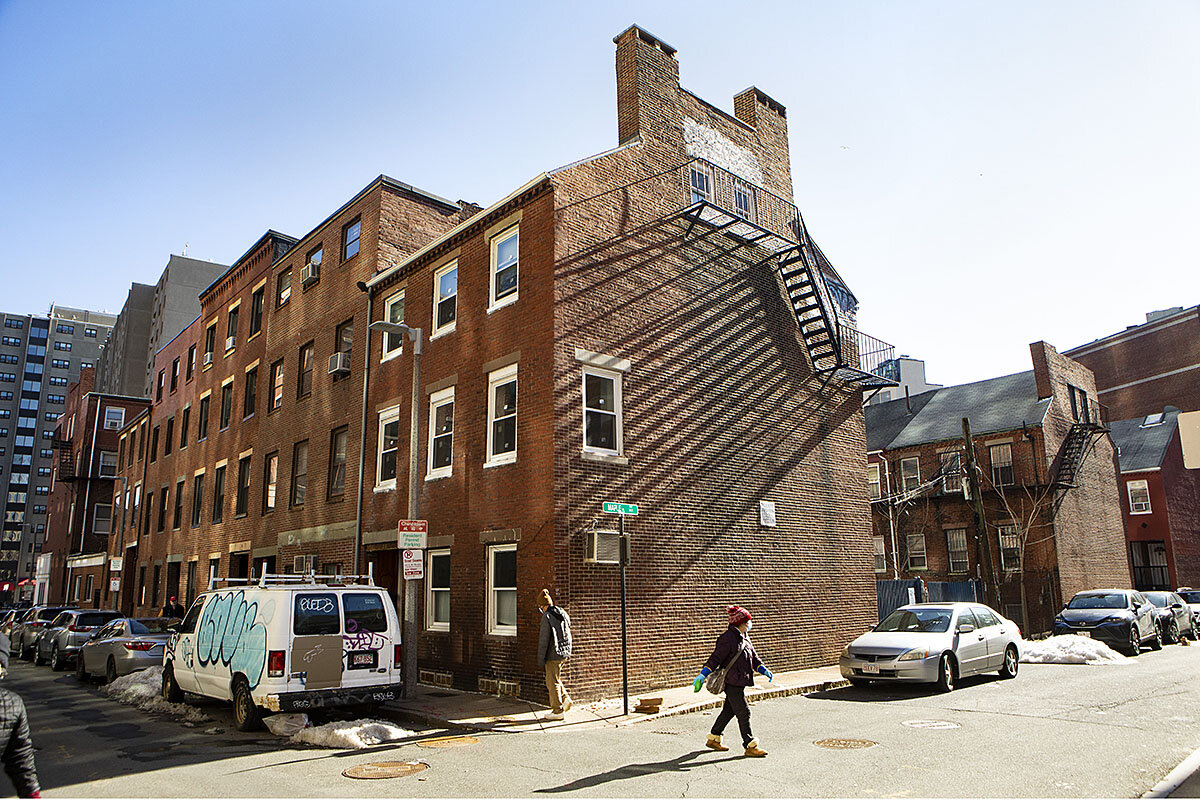
“Breathing space”
Community land trusts have been around for decades, but the trend really began to accelerate after the 2008 recession. In 2019, the Schumacher Center for a New Economics counted 215 land trusts in the U.S. and estimates that there are more than 250 today.
Basically, land trusts raise money from donations, grants, and government funds to buy property. Then they lease the house or apartment to a buyer well below market value, but the trust retains ownership of the land.
This way, occupants typically get an ownership stake in their homes. They build equity over time, but at a rate that is often capped at 1% or 2% a year. The trust, which is governed democratically by residents and neighbors, can decide to whom the dwelling can be sold and at what price, usually through a covenant in the lease. This ensures the property remains affordable.
The land trust idea was imported to the United States by civil rights activist Charles Sherrod in the early 1970s from the kibbutzim of Israel. Mr. Sherrod saw land trusts as a way for Black Americans to buy agricultural land in the South.
“We don’t always talk about community land trusts as tools of justice, but they are,” says Andre Perry, a housing policy expert at the Brookings Institution.
Dr. Perry’s own research shows that an “intrinsic value of whiteness” persists at almost every step of home buying from the appraisal to the sale. Minorities, but especially Black people, must pay more and get less.
By taking property out of the traditional market, land trusts reduce the discrimination baked into that system and empower communities to actively fight it, Dr. Perry says.
When Susan Saegert, a professor of environmental psychology at the City University of New York, compared homebuyers and renters with land trust homebuyers in several U.S. cities, she found that the land trust buyers were more likely to be minorities, especially single mothers. Moreover, she found that they received all the social benefits of homeownership – things like stability and a sense of home – without as many costs.
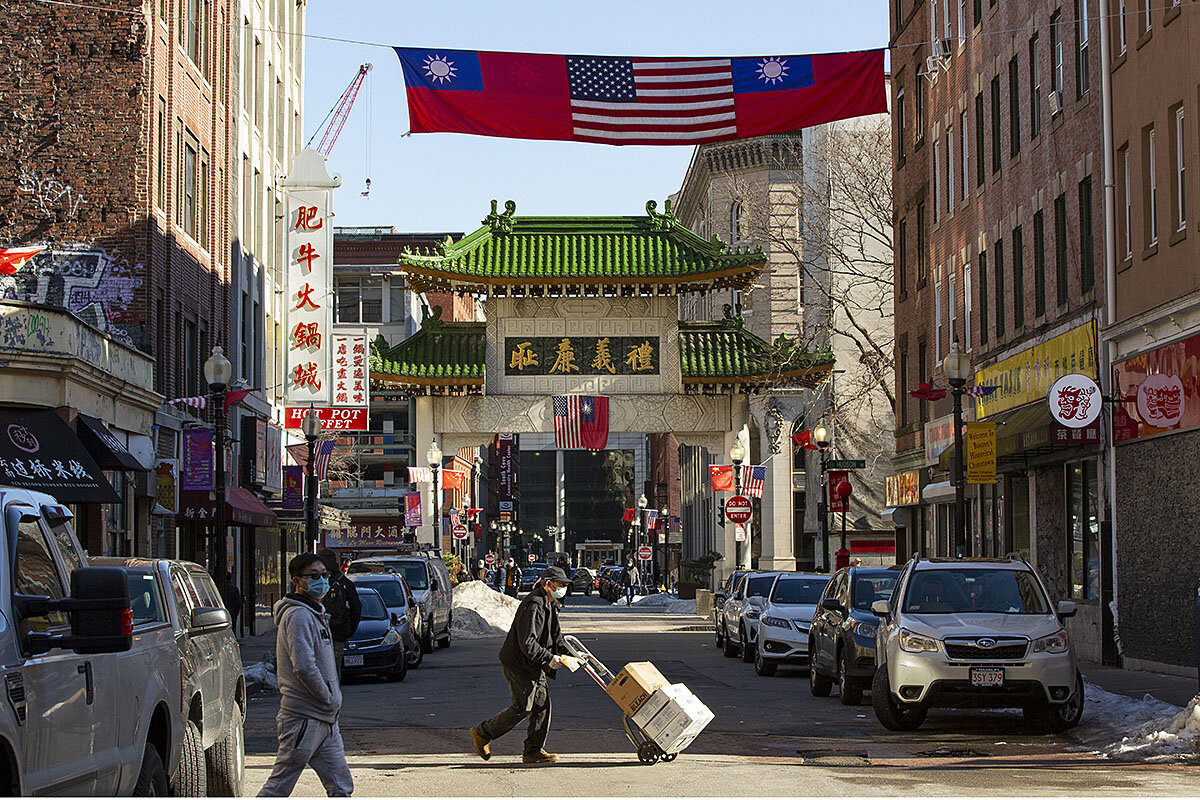
One of the most striking findings was in survey data from Minneapolis, Professor Saegert says. Freed from the stress of constantly worrying about the next rent hike or eviction, land trust homeowners there reported they had more time to pursue their passions.
“They have breathing space,” Professor Saegert says. “They can now imagine a better life than before.”
Innovation needed
In California, justice is what drives Jacqueline Rivera and her fellow housing activists in San Jose. In the heart of Silicon Valley, where even high-paid tech employees struggle to find housing, development was pushing out vibrant Black, Hispanic, and immigrant neighborhoods.
In community conversations Ms. Rivera and her colleagues held around the city in 2018, land trusts kept coming up. Ms. Rivera grabbed hold of the idea, and by 2020 she was heading up the South Bay Community Land Trust.
Success has not come easily, though.
By definition, land trusts do not make profits, and fundraising is the biggest challenge they face. To buy their first property, a fourplex in downtown San Jose, they need to fundraise at least $1 million, on top of the half million dollars they need to pay professional staff and make the organization run. Speed is a problem, too. Developers snap up properties with cash in a matter of days, while the land trust moves “at the pace of community,” Ms. Rivera says.
Yet, in order to disrupt traditional real estate, land trusts “still have to play in the real estate game,” she adds.
Advocates stress that land trusts are just one tool in a broader approach to the affordability crisis, but it could be a more effective one with government help. Ms. Sorce, of Grounded Solutions, says state and local governments should invest money in land trusts and change appraisal policies so land trust properties aren’t paying taxes based on their speculative value.
With or without such help, land trusts must innovate to succeed.
“When we think about community land trusts, so many times we think about just the homeownership level,” says Sheldon Clark, who recently served as president of the board of the Douglass Community Land Trust in Washington, D.C. “And that really just doesn’t cover the housing needs that we have.”
Douglass has units it’s maintaining as permanently affordable rentals and other properties set up as cooperatives. They’ve also helped tenants take advantage of a District of Columbia law that entitles them to buy their unit if their landlord plans to sell.
Really, land trust leaders say, homeownership is just one aspect of their focus on what Mr. Clark calls the “big C” in community land trusts: the community.
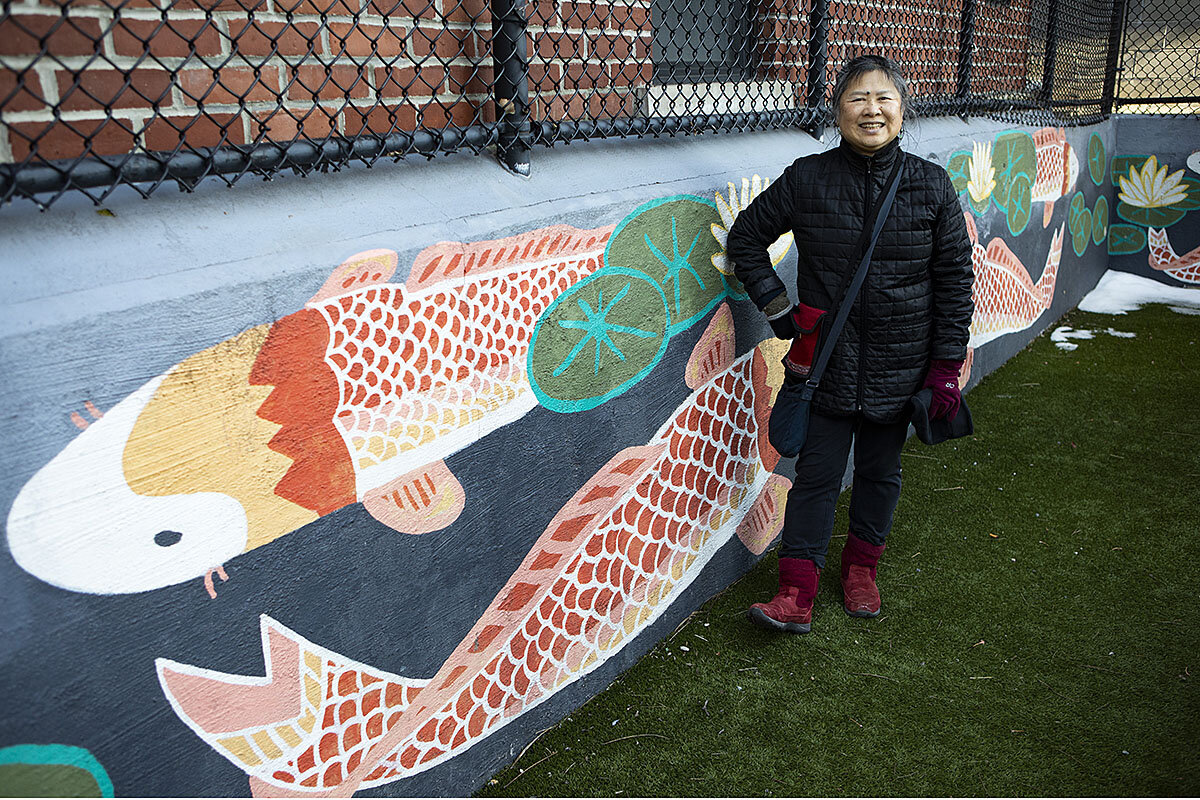
Douglass organized food drives during the pandemic and helps connect residents to credit unions, as many are unbanked. In Boston’s Chinatown, the land trust helped save a local park.
Lydia Lowe, the Chinatown Community Land Trust’s executive director, strides down the narrow streets of the neighborhood she’s fought for since the 1980s with pride and determination. She points out low-income apartments she’s worked to save from developers on Johnny Court and buildings the land trust is eyeing near the Ding Ho takeout place on Harrison Avenue.
Ms. Lowe has needed plenty of determination since the land trust’s incorporation in 2015. “We couldn’t get anyone to give us property because they’re sitting on a gold mine,” she says. In 2019 the land trust finally secured two row houses, seven units in total, and set about refurbishing them.
Finally one day in September 2021 the three-bedroom walk-up on Oak Street was ready. After their long wait since moving from China, Ms. Lin and her family opened the door and walked in. They could hardly believe what they saw: three cozy bedrooms, a living room with big windows, and a spacious kitchen.
Most of the apartments on Oak Street in Boston are priced from $600,000 to well over $1 million, according to Zillow. Chinatown Community Land Trust sold Ms. Lin and Mr. Zheng their apartment for about $220,000. Ms. Lin said homeownership in Chinatown would not have been possible without the land trust.
“I’m here with my husband and my kids. I have my own family. That’s all that matters,” Ms. Lin says. And six years after coming to America, it finally feels like her family has a home.

Books
10 books to brighten your march toward spring
Our 10 picks for this month include books that celebrate the joy of music, explore family dynamics, undermine autocracy, and reflect on the changing definition of “woman.”
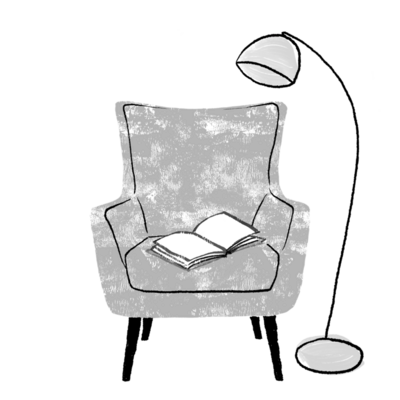
- Quick Read
- Deep Read ( 3 Min. )
-
By Monitor reviewers
“Our life is March weather, savage and serene in one hour,” wrote American philosopher Ralph Waldo Emerson. The swings in the natural world reflect the many moods that readers will encounter in the 10 best books of this month.
An atmosphere of buoyancy and purpose arises from a novel about studying music with Johann Sebastian Bach, bringing with it a sense of transcendence. Another novel examines the family of John Wilkes Booth, and the far-reaching effects of his assassination of President Abraham Lincoln, offering a path for understanding family dynamics, both historic and current. A third title takes inspiration from George Orwell’s “Animal Farm,” transposing the tale to Africa and using animals to deliver a piercing political commentary.
Among the nonfiction books, an Iranian American writer points out the importance of reading books that are considered challenging, rather than advocating banning and censorship, and the rewards of keeping an open mind. Another title unfolds a history of the definition of “woman” and demonstrates how oppressive notions about women were resisted and overturned. And an amateur historian writes with humor and heart about following the European itinerary of Thomas Jefferson and coming to grips with Jefferson’s complicated legacy.
10 books to brighten your march toward spring

The selections this month cover a range of genres, from a thrilling novel about secret maps and a coming-of-age love story to a nonfiction look at Russian émigrés in Paris after the 1917 revolution.
1. The Great Passion by James Runcie
James Runcie evokes the rigors and rewards of studying with Johann Sebastian Bach during the 1720s. The busy composer brings Stefan, a bullied teenager and talented singer, under his wing, providing purpose and a sense of home. Runcie vividly depicts the teacher-pupil dynamic and the all-consuming demands of a creative pursuit. In soaring language, he portrays music’s ability to rouse, heal, and awaken wonder.
2. Groundskeeping by Lee Cole
Lee Cole’s novel sheds light on America’s social and political divisions through a coming-of-age love story. College groundskeeper Owen, a Kentuckian with deep roots in the South, and accomplished Alma, a Bosnian immigrant on an academic fellowship, find solace despite their different backgrounds.
3. Booth by Karen Joy Fowler
Karen Joy Fowler’s “Booth” offers an absorbing tale of the family of Junius Booth, one of the most famous Shakespearean actors of his time – whose sons included John Wilkes Booth, the assassin of Abraham Lincoln. Her focus is on the circumstances that produced this man, and how his heinous act affected his close-knit, pro-Union, mostly abolitionist family. But like the best historical fiction, “Booth” helps us recognize connections between the past and present.
4. Glory by NoViolet Bulawayo
“Glory” depicts the anguish, absurdity, and grind of life in a fictional African autocracy. Each well-drawn character – from the ancient despot and his sycophants, to the rapacious successor, to exhausted citizens – is an animal. The engrossing allegory delivers a powerful emotional punch, along with keen political and social commentary.
5. The Cartographers by Peng Shepherd
Peng Shepherd’s captivating thriller begins with the death of an esteemed cartographer, who years earlier inexplicably fired his daughter, Nell, from the New York Public Library after she uncovered a 1930 map. Nell’s investigation unveils secrets about her family’s past and the map’s allure.
6. Read Dangerously by Azar Nafisi
A prolific reader and gifted Iranian American writer argues that careful reading of challenging literature helps us make sense of our chaotic and turbulent times. A meticulously reasoned, timely, and welcome reminder about why we read.
7. Woman by Lillian Faderman
Lillian Faderman charts the changing meaning of “woman” from the 17th century to the present. She illustrates historical cycles of repression and resistance with a wealth of examples, demonstrating that women of all races and classes have chafed against oppressive notions of what a woman ought to be.
8. After the Romanovs by Helen Rappaport
One of the effects of the Romanov dynasty’s fall in 1917 was a flood of Russian refugees into Europe, including the arrival of aristocrats, artists, writers, and intellectuals who landed in Paris at the height of the city’s creative ferment. Helen Rappaport tells their stories with marvelous skill and empathy.
9. Julia Morgan by Victoria Kastner
Victoria Kastner pulls back the curtain on architect Julia Morgan, the first woman admitted to Europe’s finest school for architecture, the first woman licensed to practice in California in the early 1900s, and the creator of roughly 700 structures, including Hearst Castle. It’s an inspiring portrait, highlighting the grit and grace that Morgan possessed.
10. In Pursuit of Jefferson by Derek Baxter
In Derek Baxter’s winning debut, the attorney and amateur historian follows the itinerary suggested by Thomas Jefferson in an unpublished travel guide, “Hints to Americans Traveling in Europe.” Along the way, with humor and heart, he grapples with the founder’s complicated legacy.
Other headline stories we’re watching
(Get live updates throughout the day.)The Monitor's View
Fighting inflation by minting new ideas
- Quick Read
- Deep Read ( 3 Min. )
-
By the Monitor's Editorial Board
The U.S. Federal Reserve raised interest rates a quarter of a percentage point yesterday for the first time since the start of the pandemic to address inflation. The Bank of England made a similar adjustment today. But what may matter more than the numbers was an acknowledgment that, as the Fed put it, their “economic forecasts are necessarily imperfect descriptions of the real world.” In other words, amid the uncertainties of the pandemic and war in Ukraine, central banks are out of silver bullets.
That transparency matters. It can bolster flagging public confidence in the institutions that shepherd economic stability. More importantly, it may help break the “inflationary mindset” by invigorating companies and individuals to seek solutions through innovation.
According to the Bureau of Labor Statistics, productivity grew by 6.6% in the last quarter of 2021. This reflects vigorous efforts by businesses to become more efficient, such as in the growth of online car sales.
Fed Chairman Jerome Powell describes his approach to inflation as “humble and nimble.” As central banks adjust their policy knobs to restore balance to prices, wages, and growth, those qualities hold a lesson. Stability starts on the supply side of ideas, which everyone can access.
Fighting inflation by minting new ideas
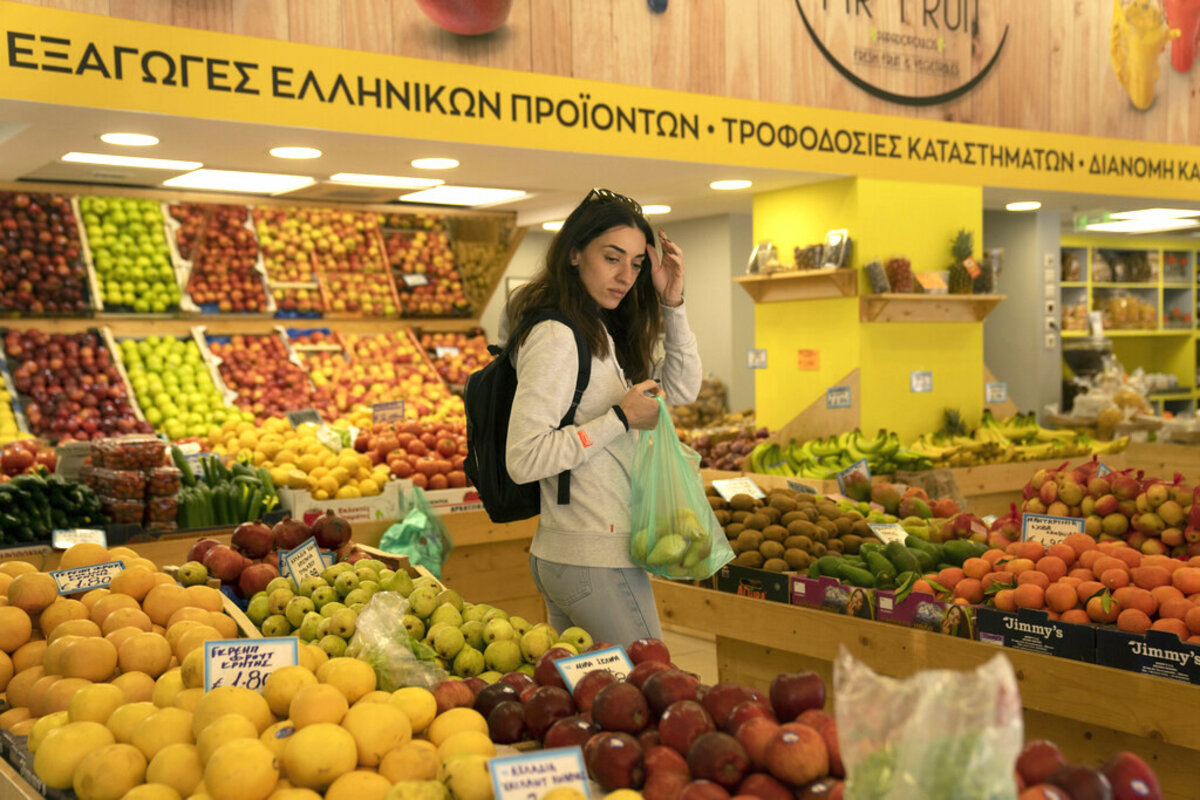
When central bankers huddle at economic crossroads, sometimes words speak louder than actions. The U.S. Federal Reserve raised interest rates a quarter of a percentage point yesterday for the first time since the start of the pandemic to address inflation. The Bank of England made a similar adjustment today– its third in recent months. The European Central Bank, meanwhile, says it will gradually buy fewer bonds. For economists wanting bolder efforts to tame soaring prices, it has been a disappointing week.
But what may matter more than the numbers was an acknowledgment that, as the Fed put it, their “economic forecasts are necessarily imperfect descriptions of the real world.” In other words, amid the uncertainties of the pandemic and war in Ukraine, central banks are out of silver bullets.
That transparency matters. It can bolster flagging public confidence in the institutions that shepherd economic stability. More importantly, it may help break the “inflationary mindset” or “psychology of inflation” by invigorating companies and individuals to seek solutions through innovation and personal agency.
“Few are talking about the role innovation could play in this business cycle,” observed Callie Cox, an investment analyst at eToro, in a 2021 blog post. “We’ve had to re-think how we live, work, and interact with each other. And that collective re-thinking has led to a renaissance era of sorts – one that could potentially lead to productivity gains for U.S. companies and an extra boost for the economy and markets.”
Inflation in the United States, at 7.9%, is at its highest rate since 1982. A Quinnipiac University Poll survey found last month that 27% of respondents saw inflation as the country’s most urgent issue, while 59% said the economy is worsening. In Britain, where inflation is at a 30-year high of 5.5%, a Bank of England quarterly survey found last week that the public’s outlook on inflation and wages is more pessimistic than at any time since 2008.
How the public thinks about inflation can have a spiral effect. When prices rise sharply, as they have now, consumers may start spending more rapidly to avoid even greater costs ahead. That hasn’t happened yet. But as higher inflation persists, the risk grows that the public will become more focused on the short-term consequences. The result is that inflation can become self-sustaining.
Prices at the pump and grocery checkout lanes, however, may obscure more optimistic indicators. Productivity has grown by an average of 2.3% per year since 2018. According to the Bureau of Labor Statistics, productivity grew by 6.6% in the last quarter of 2021. Wages have grown 2% annually during the past two years. Those figures illustrate the opposite of what happened during the high-inflation 1970s, when productivity fell sharply and wages stagnated.
This reflects vigorous efforts by businesses to become more efficient, such as in the growth of online car sales and the estimated tens of billions of dollars saved as more people work from home. Changes like these in the way businesses operate and people work “provide reason to believe that the uptick in productivity growth over the past three years may continue,” wrote Dean Baker, a senior economist at the Center for Economic and Policy Research, last week.
Fed Chairman Jerome Powell describes his approach to inflation as “humble and nimble.” As central banks adjust their policy knobs to restore a right balance to prices, wages, and growth, those qualities hold a lesson. Stability starts on the supply side of ideas, which everyone can access.

A Christian Science Perspective
Each weekday, the Monitor includes one clearly labeled religious article offering spiritual insight on contemporary issues, including the news. The publication – in its various forms – is produced for anyone who cares about the progress of the human endeavor around the world and seeks news reported with compassion, intelligence, and an essentially constructive lens. For many, that caring has religious roots. For many, it does not. The Monitor has always embraced both audiences. The Monitor is owned by a church – The First Church of Christ, Scientist, in Boston – whose founder was concerned with both the state of the world and the quality of available news.
Never displaced from good
- Quick Read
- Read or Listen ( 4 Min. )
-
By Samuela Orth-Moore
Wherever we may be in the world, and whatever the circumstances that brought us there, no one can ever be separated from God’s guiding, protecting, healing love.
Never displaced from good
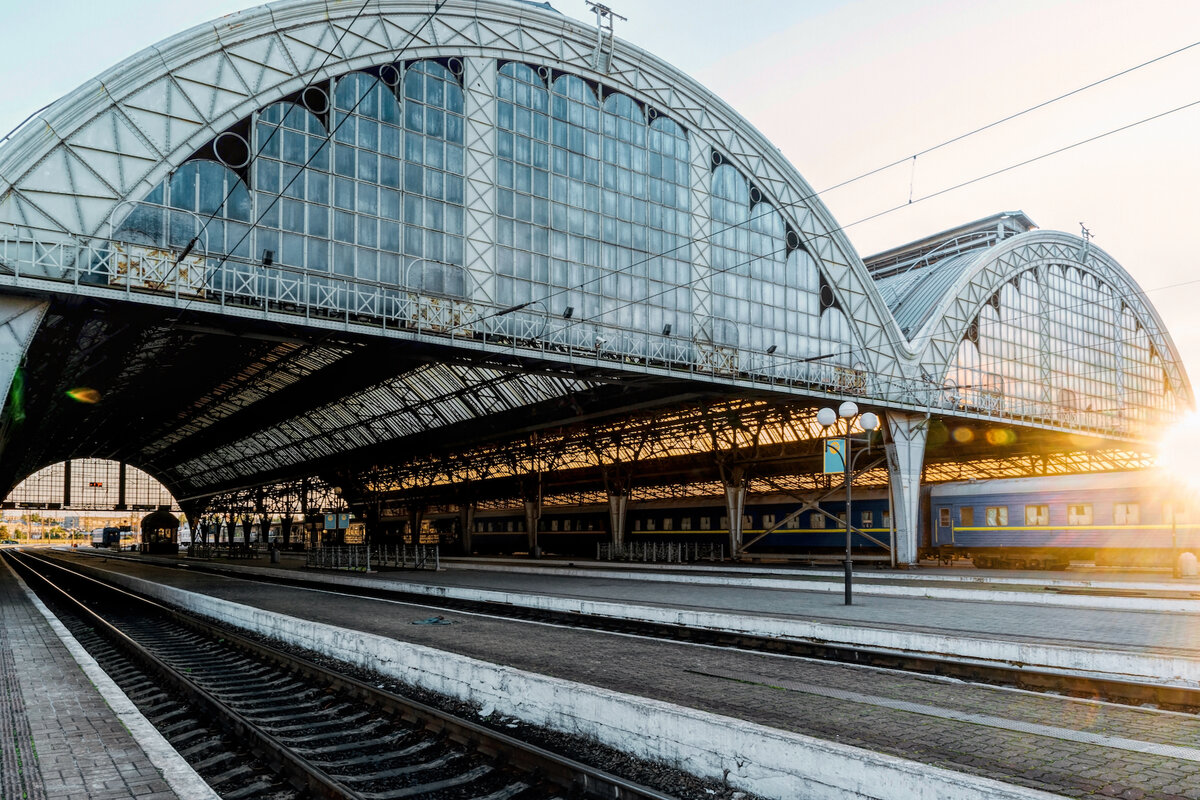
According to UNHCR, the United Nations Refugee Agency, at the end of 2020, 82.4 million people were forcibly displaced either outside their home country as refugees or internally within their nation’s borders.
This number has become of growing concern right here on my own doorstep. In recent weeks and months, people in Ethiopia, where I am living, are being internally displaced because of civil war, and some are fleeing to neighboring countries. I have been deeply distressed by the magnitude of this problem.
Whenever I am faced with troubling news, I turn to prayer. But when a problem is so widespread, so seemingly colossal, how does one effectively pray? One day, an answer came to me in these words about God from Hymn 136 in the “Christian Science Hymnal”: “Thy presence ever goes with me / And Thou dost give me peace” (Violet Hay, © CSBD). God gave me this answer, which, interestingly, had also helped me pray about my own feelings of displacement some months earlier.
On that occasion, these same words came to me when I was feeling a profound sadness at the thought of having to leave a place I deeply love. It was an experience that cannot possibly compare to the tribulations many are facing today; I wouldn’t be losing my home, my possessions, or my livelihood. Even so, I felt a sense of loss. I asked God to give me peace and remove the fear and uncertainty of what might happen before I could get back again.
I have moved many times and have lived in some difficult places as well as some wonderful places. Wherever I find myself, I try to make it a practice to demonstrate that “godliness with contentment is great gain” (I Timothy 6:6). But sometimes I have felt a long way from reaching that goal. I so desired to feel peaceful and not anxious, wherever I lived.
Early one morning, I prayed to gain a more spiritual concept of “place” and to feel the security of knowing I could never actually leave my happy place in God, no matter where I went in this big, wide world. God is not a corporeal being but divine Spirit, and He could never be confined to a physical place. Moreover, I am Spirit’s manifestation or reflection; therefore, I am spiritual. So, I can never ever go outside of Spirit. Spirit is everywhere because God is omnipresent. We are inseparable from Spirit, as a ray of light is inseparable from the sun. We are always at one with God, good.
It was evident to me that I wasn’t leaving the good I had there in that place that I loved, since good is not personal or confined to any location. God is good; therefore, good is everywhere. God, good, goes with me, and I go with Him because we are one. I was so grateful to know this. It gave me a deep-seated peace that I took with me and have been leaning on in the months since.
Not long after we returned to Ethiopia in the fall, our family had to evacuate from our house because of the intensifying civil conflict. We weren’t sure how long we would be gone or what would happen while we were away. Things were unstable, and there was an army advancing on the city. We went to a neighboring country and were gone for two months, until it was deemed safe for us to return.
During that time away, I learned more about what it means to never be outside of Spirit – outside of God, good. When I look back on it now, I see that what could have been a difficult experience was instead full of the evidence of Spirit’s care and comfort. And when we returned to our house, everything was in order, and the city was untouched, despite dire predictions.
This experience, although just a tiny glimpse of what displaced people and families might face, gives me a greater desire to pray each day for all refugees, asylum seekers, and displaced persons in Ethiopia and worldwide, who have lost their homes, livelihoods, and, in some cases, families. I pray to see that all are embraced in the protection and care of this divine Spirit. We are each in the place where God is. We can’t ever leave this place – it is our permanent home, where we are always cared for and safe.
This interpretation of Isaiah 45 from Eugene Peterson’s “The Message” so beautifully encircles the whole world in divine Love’s embrace and promise of deliverance: “Gather around, come on in, all you refugees and castoffs.... Turn to me and be helped – saved! – everyone, whoever and wherever you are. I am God, the only God there is, the one and only” (verses 20 and 22).
Adapted from an article published on sentinel.christianscience.com, March 10, 2022.
THE MESSAGE, copyright © 1993, 2002, 2018 by Eugene H. Peterson. Used by permission of NavPress, represented by Tyndale House Publishers. All rights reserved.

A message of love
A dance break

A look ahead
Thank you for joining us today. We hope you’ll come back tomorrow when our Taylor Luck looks at the Ukraine war through the lens of Russian involvement in the Syrian civil war. The strategies are familiar and could point to where things go from here.


